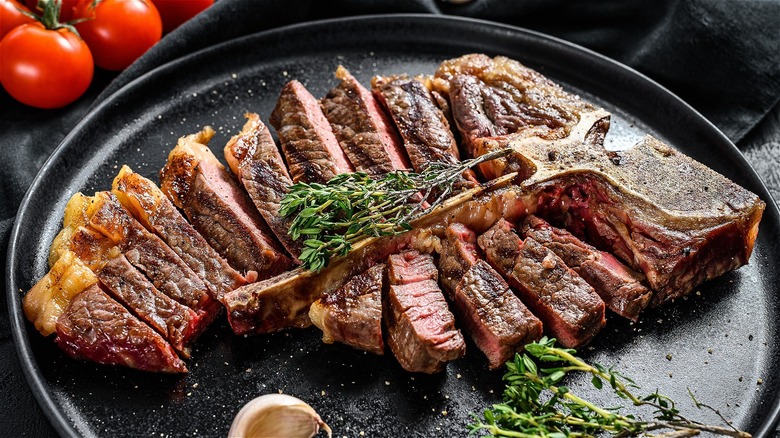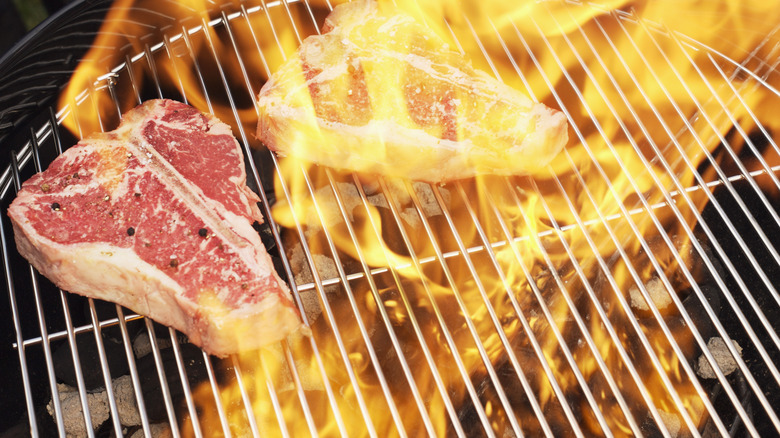What Really Makes Florentine Steak So Special
When in Rome, do as the Romans do and order a heaping helping of Bucatini all'Amatriciana. But when in Florence, forget what the Romans recommended and listen to your friendly Florentine waiter instead. If you do, you'll likely wind up with an impressive plate of bistecca alla Fiorentina – the monstrous Florentine steak that has a long history as the culinary crown jewel of northern Italy.
Steak may sound like an odd choice at an Italian restaurant, but rest assured, bistecca alla Fiorentina is not your run-of-the-mill cut of beef. The cows that supply the meat come from an ancient breed of cattle called the Chianina, which are native to Tuscany. Chianina cows provide extremely lean beef with fine strands of marbled fat that lend to an elevated flavor profile. And while the beef is noteworthy in and of itself, it's the cut of a Florentine steak that really leaves an impression.
Bistecca alla Fiorentina is made from a porterhouse cut, which is harvested from the loin of the cow, just above the rib cage. The bone-in cut of beef includes both the tender filet of the cow, as well as the rich and flavorful New York strip. What's more, a Florentine steak is measured in the most Florentine way imaginable — by using your fingers. A typical cut is between three and four fingers wide, which can provide upwards of 40 ounces of steak! Don't worry about eating it all, though. These big babies are meant to be enjoyed family-style.
How a Florentine steak is prepared
Tuscan cuisine is celebrated for its simplicity. Rather than employing the use of complicated cooking methods, the people of northern Italy prefer to use high-quality ingredients that speak for themselves. In no dish is this sentiment more evident than in the preparation of a Florentine steak. Because bistecca alla Florentine is made with such a thick cut of meat, cooking it requires extremely high temperatures. For that reason, it is imperative that the steak is cooked over an open fire. Each side of the streak is grilled for 3-5 minutes. When done correctly, you should be left with visible grill marks, a crispy char, and a warm, rare center.
Because this dish is all about letting the meat shine, Florentine steak calls for no seasoning other than a sprinkle of rock salt, which is typically added just before the steak hits the table. In fact, the "only salt" rule is so strict that if a bistecca alla Florentine is dressed with olive oil, arugula, or other seasonings, native Florentines typically assume that this was done in an effort to mask improper cooking.

